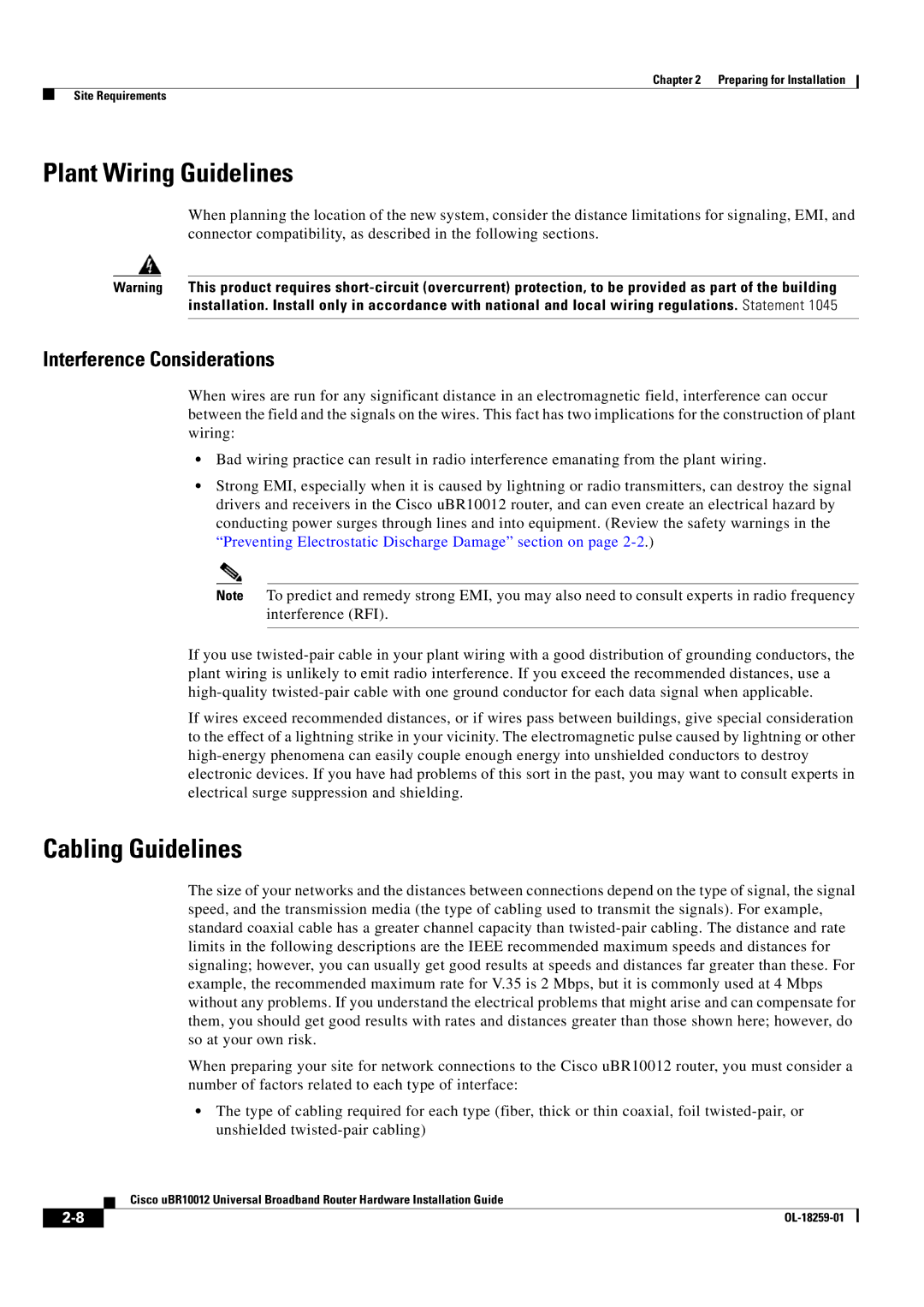
Chapter 2 Preparing for Installation
Site Requirements
Plant Wiring Guidelines
When planning the location of the new system, consider the distance limitations for signaling, EMI, and connector compatibility, as described in the following sections.
Warning This product requires
Interference Considerations
When wires are run for any significant distance in an electromagnetic field, interference can occur between the field and the signals on the wires. This fact has two implications for the construction of plant wiring:
•Bad wiring practice can result in radio interference emanating from the plant wiring.
•Strong EMI, especially when it is caused by lightning or radio transmitters, can destroy the signal drivers and receivers in the Cisco uBR10012 router, and can even create an electrical hazard by conducting power surges through lines and into equipment. (Review the safety warnings in the “Preventing Electrostatic Discharge Damage” section on page
Note To predict and remedy strong EMI, you may also need to consult experts in radio frequency interference (RFI).
If you use
If wires exceed recommended distances, or if wires pass between buildings, give special consideration to the effect of a lightning strike in your vicinity. The electromagnetic pulse caused by lightning or other
Cabling Guidelines
The size of your networks and the distances between connections depend on the type of signal, the signal speed, and the transmission media (the type of cabling used to transmit the signals). For example, standard coaxial cable has a greater channel capacity than
When preparing your site for network connections to the Cisco uBR10012 router, you must consider a number of factors related to each type of interface:
•The type of cabling required for each type (fiber, thick or thin coaxial, foil
Cisco uBR10012 Universal Broadband Router Hardware Installation Guide
|
| |
|
